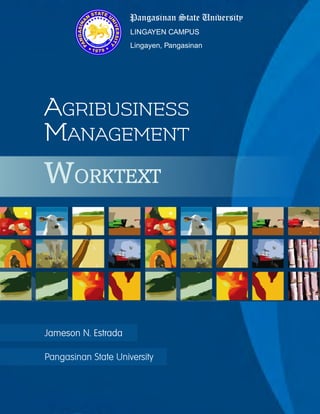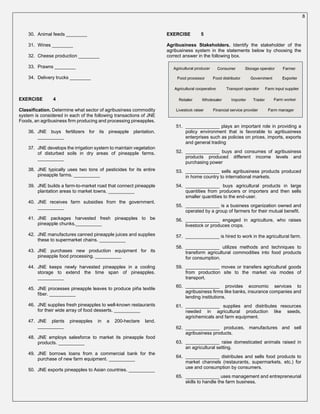This worktext is designed for students of agribusiness management at Pangasinan State University, focusing on the key principles of managing agribusiness ventures. It contains comprehensive resources, exercises, and assessments to foster understanding of agribusiness operations, market dynamics, and financial strategies. The goal is to equip students with the essential knowledge and skills needed to navigate agribusiness effectively and appreciate its role in the Philippine economy.























